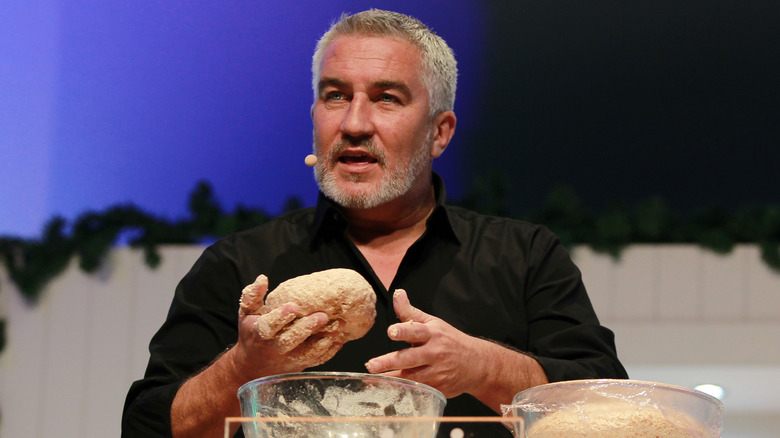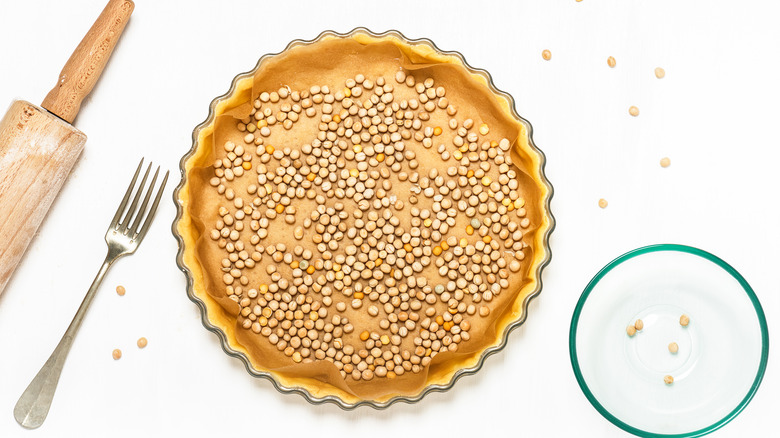Paul Hollywood's Foolproof Technique To Avoid Soggy Bottom Bakes
It's been said that nothing's as American as an apple pie, but most won't say no to just about any variety under the sun — from a creamy pumpkin or pecan pie at Thanksgiving or a silky luscious chocolate pie, or even a veggie pot pie for a comforting dinner.
Most people love the buttery, flaky pastry stuffed with all sorts of fillings from sweet to savory, fruity to meat-filled. But for a pie worth having seconds, we must talk about not just the insides, but the crust that holds it all together. Whether you make yours from scratch or opt for the time-saving perks of a store-bought crust, one common pie crust mistake is a soggy bottomed crust.
This baking faux pas can mean fillings slide out, slices fall apart, or you simply miss out on that satisfying bite of a flaky crust that holds its shape and stays firm. Luckily, Paul Hollywood, baking extraordinaire and judge on "The Great British Bake Off" has a hack to ensure your pieces will never again suffer from soggy bottomed baked crusts. In a clip from the show (via BBC), he shared that his secret is blind baking the crust before filling with sliced apples, cheese and tomatoes, or whatever your filling. This step is a foolproof technique when dealing with sweet pastry or any crust recipe. It means you simply pre-bake the crust without the filling so your crust is nice and flaky, never soggy, once it meets up with the filling.
Give the crust a head start in the oven
To successfully put Paul Hollywood's tip to work, line your pie tin with the crust, and pre-heat your oven. Don't pop that pie crust in naked though. The important step here is to cover the raw dough with a layer of cooking plastic wrap as Hollywood suggests — or, if putting plastic into a hot oven makes you nervous, use parchment paper. Then, fill your pie with dried beans or rice up to the top of the dish, which acts as weights to hold the crust in place as it bakes.
The thinking behind blind baking is to give your pastry a head start before adding in your filling. This might mean you're sliding the pie into the oven twice — once for just the crust, then again with the filling. Or, if you're making a no-bake pie, the blind bake will be the only one. Time in the oven can vary depending on the recipe. A full blind bake means the dough gets fully cooked until done, versus a partial blind bake, or par-bake, which only partially pre-cooks the pastry.
Either way, you're ensuring the pastry crisps up long before the moisture from the filling can seep into it, turning the dough gooey. Plan to blind bake any pie that calls for just one crust, and certainly use the step for pies with high moisture contents, like those made with custard or juicy fruit.

